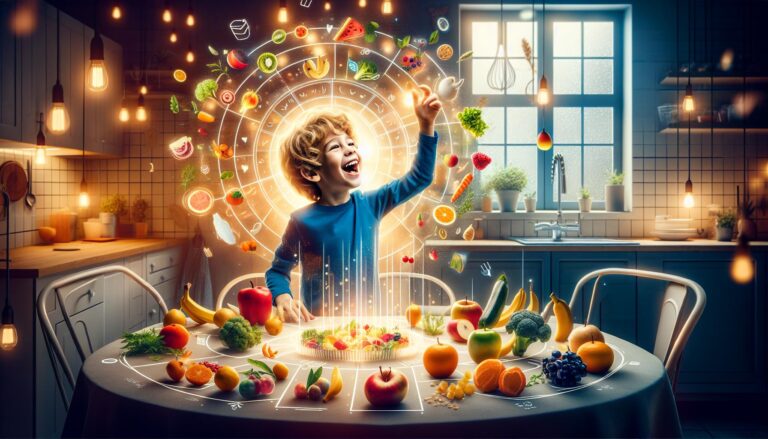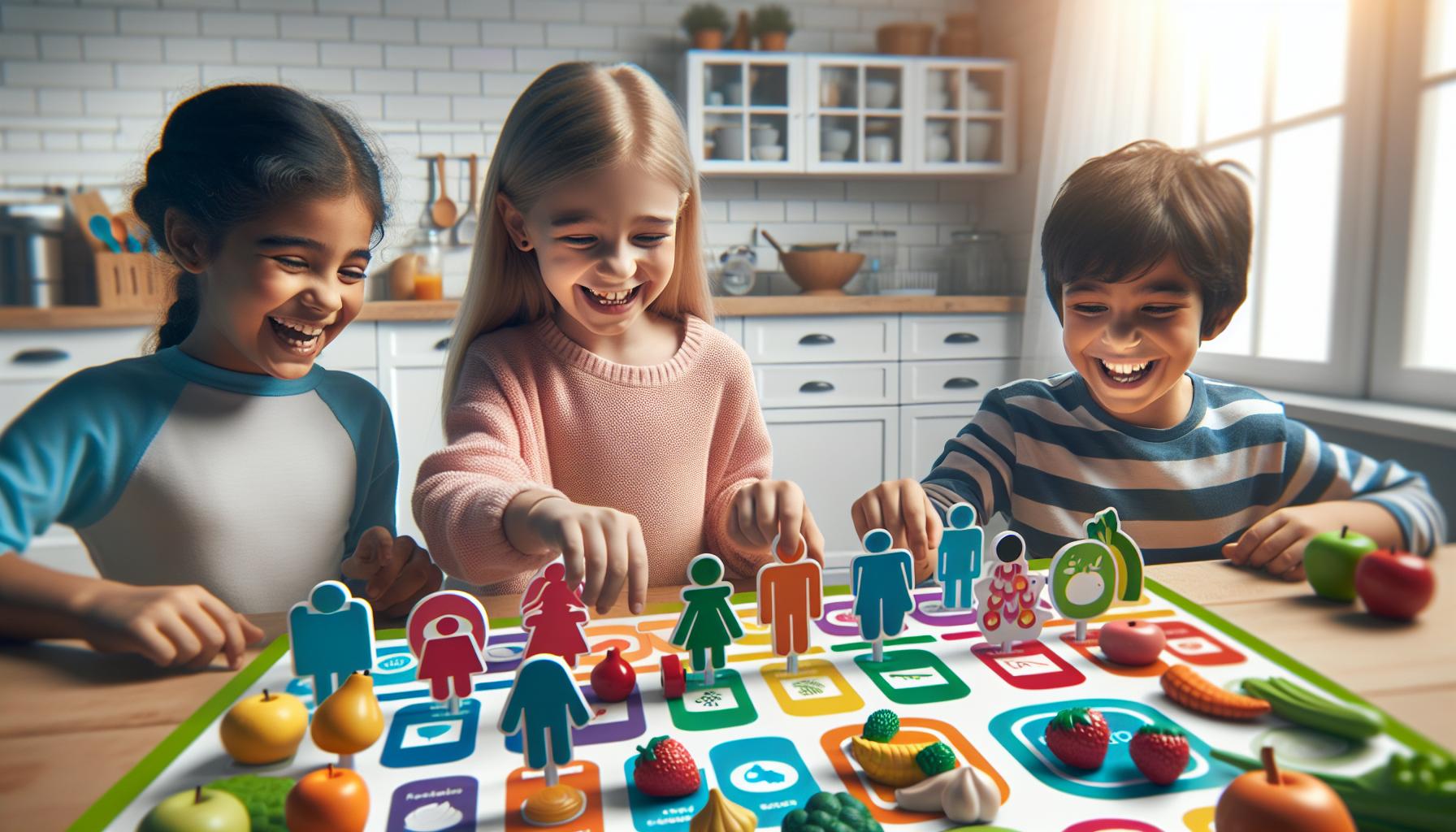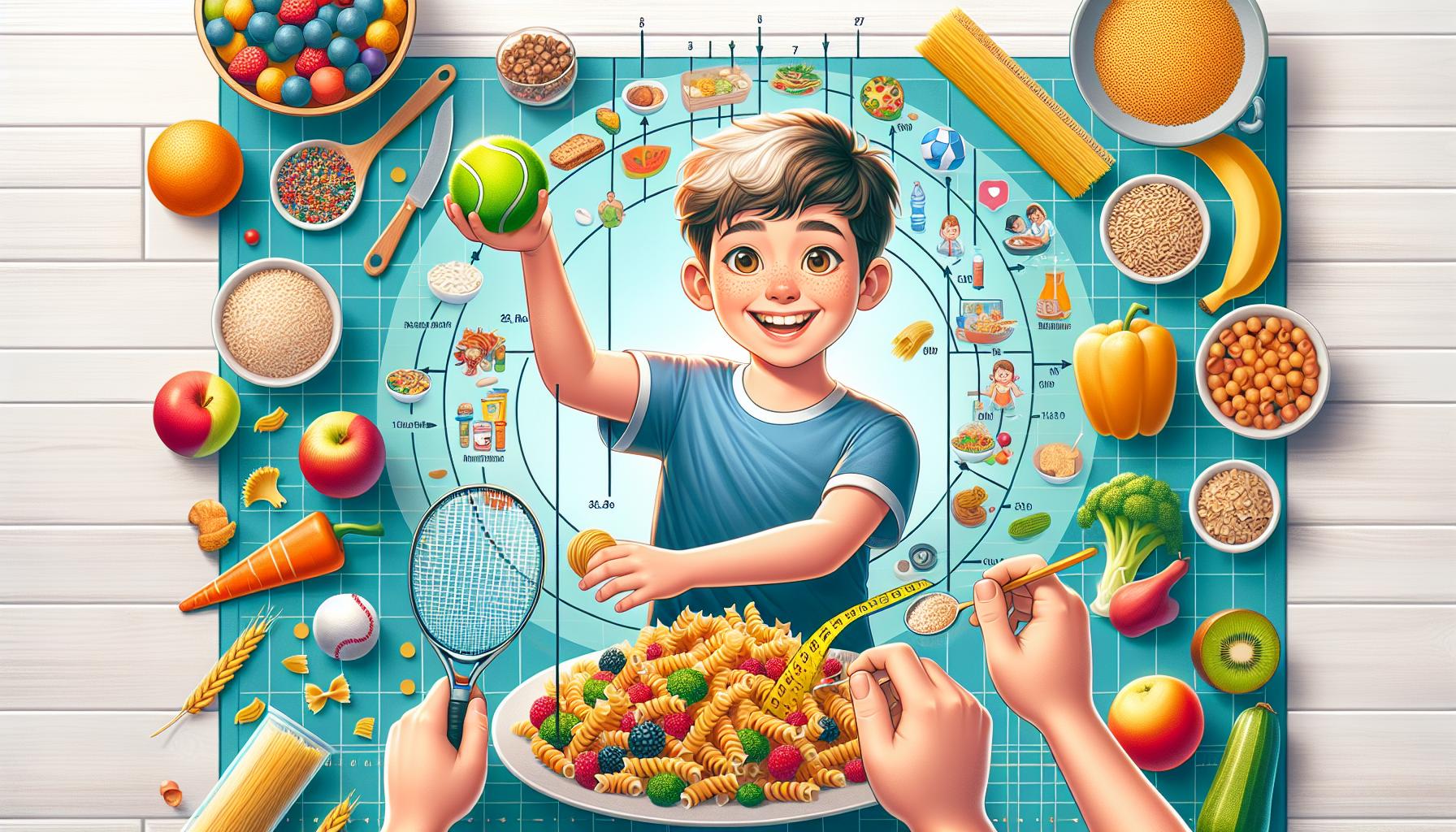
Teaching kids about food groups can feel like a challenge for many parents and educators. We all want our children to develop healthy eating habits but getting them excited about nutrition isn’t always easy. What if we could make learning about food groups fun and memorable?
We’ve discovered that kids learn best through engaging activities hands-on experiences and colorful visuals. By turning nutrition education into an adventure we can help children understand the importance of balanced meals while keeping them interested and motivated. Let’s explore creative ways to teach our little ones about proteins carbohydrates fruits vegetables and dairy that’ll make healthy eating second nature.
Key Takeaways
- Understanding food groups (fruits/vegetables, grains, proteins, and dairy) creates the foundation for teaching kids about balanced nutrition
- Interactive activities like sorting games, color recognition, and hands-on cooking projects make learning about food groups fun and memorable for children
- Using visual tools and familiar objects helps kids grasp portion sizes – like comparing protein servings to a deck of cards or using their palm as a measuring guide
- Involving children in meal planning, grocery shopping, and food preparation reinforces their understanding while developing important life skills
- Age-appropriate serving sizes vary, with portion guidelines increasing as children grow from toddlers to teens
What Are the Main Food Groups?
Food groups create the foundation for healthy eating by organizing nutritious foods into distinct categories. Understanding these groups makes balanced meal planning straightforward for both parents and kids.
Fruits and Vegetables
Fruits and vegetables pack essential vitamins, minerals and fiber into colorful packages. Fresh apples, bananas and oranges provide natural sweetness, while carrots, broccoli and spinach offer important nutrients for growing bodies. Kids can learn to “eat the rainbow” by choosing produce in different colors – red tomatoes, green peppers and purple eggplants create engaging visual lessons about variety.
Grains and Cereals
Grains supply energy through carbohydrates and B vitamins. Whole grain options like brown rice, oatmeal and whole wheat bread contain more fiber and nutrients than refined grains. Teaching kids to spot whole grains on food labels helps them make smarter choices. Simple activities like comparing whole wheat versus white bread textures make learning about grains hands-on.
Protein Foods
Protein builds strong muscles and supports growth in children. This group includes lean meats, fish, eggs, beans and nuts. Fun protein-rich snacks like hard-boiled eggs decorated as animals or nut butter spread on celery “boats” get kids excited about this food group. Plant-based proteins like chickpeas and lentils introduce variety while teaching sustainability.
Dairy Products
Dairy foods strengthen bones and teeth through calcium and vitamin D. Low-fat milk, yogurt and cheese give kids multiple tasty options. Creative serving ideas like yogurt parfaits with fruit layers or cheese cubes threaded onto pretzel sticks make dairy foods more appealing. For lactose-intolerant children, fortified non-dairy alternatives provide similar nutrients.
Making Food Groups Fun for Kids

Learning about food groups becomes an exciting adventure when combined with engaging activities. Let’s explore creative ways to make nutrition education entertaining and memorable for children.
Interactive Games and Activities
Transform food group education into playful experiences with hands-on activities. Create a food group sorting game using colorful cards or plastic food items. Set up a pretend grocery store where kids pick items from different food groups. Play “Food Group Bingo” with pictures of healthy foods as markers. Design a food group scavenger hunt in the kitchen or grocery store where children identify items from each category.
Using Color Recognition
Colors serve as natural learning tools for teaching food groups to children. Organize fruits and vegetables by their colors to teach nutrition diversity. Create rainbow plates using red tomatoes green peppers orange carrots purple eggplants yellow squash. Match food items to corresponding colored containers or baskets. Paint or draw pictures of foods grouped by color then discuss which food groups they belong to. Turn snack time into a color-matching activity by serving foods of similar hues from different food groups.
| Food Color | Examples | Food Group |
|---|---|---|
| Red | Apples Tomatoes Strawberries | Fruits & Vegetables |
| Green | Broccoli Spinach Peas | Vegetables |
| Orange/Yellow | Carrots Oranges Corn | Fruits & Vegetables |
| Purple/Blue | Grapes Eggplant Blueberries | Fruits & Vegetables |
| White/Brown | Bread Rice Potatoes | Grains |
Teaching Portion Sizes to Children

Teaching kids about portion sizes helps establish healthy eating habits early in life. Our hands-on approach makes portion control relatable for children using everyday objects and visual comparisons.
Visual Tools and Comparisons
Children understand portion sizes better through familiar objects. A baseball represents one cup of pasta or cereal. A deck of cards matches a 3-ounce serving of meat or fish. A tennis ball equals one serving of fruit. Visual tools like divided plates create clear sections for different food groups:
- Green section: vegetables (1/2 plate)
- Orange section: grains (1/4 plate)
- Blue section: protein (1/4 plate)
- Purple circle: dairy portion on the side
Age-Appropriate Serving Sizes
Children’s portion sizes vary by age, activity level and growth stage. Here’s a simple guide for daily servings:
| Age Group | Vegetables | Fruits | Grains | Protein | Dairy |
|---|---|---|---|---|---|
| 2-3 years | 1 cup | 1 cup | 3 oz | 2 oz | 2 cups |
| 4-8 years | 1.5 cups | 1-1.5 cups | 5 oz | 4 oz | 2.5 cups |
| 9-13 years | 2-2.5 cups | 1.5 cups | 6 oz | 5 oz | 3 cups |
Easy measuring methods for kids include:
- Using their palm for protein portions
- Cupping hands together for grain servings
- Making a fist to measure fruit portions
- Using finger tips for measuring fats like butter or oils
These measurements help kids develop independence in portioning their meals while maintaining balanced nutrition.
Creating Balanced Meals Together
Teaching kids about balanced meals becomes more effective through hands-on involvement in meal planning and preparation. Engaging children in these activities creates natural opportunities for learning about food groups while developing essential life skills.
Meal Planning with Kids
Meal planning transforms into an educational game when kids participate in the process. Let them circle favorite fruits, vegetables, grains, proteins and dairy items on a weekly menu template. Turn meal selection into a food group matching activity by asking questions like “Which grain goes well with this protein?” or “What colorful vegetable can we add?” Create a simple system using stickers or magnets to track food group choices throughout the week.
Tips for kid-friendly meal planning:
- Draw pictures of meals on a calendar
- Create a food group checklist
- Pick one new recipe to try each week
- Let kids name creative meal combinations
- Use colored markers to highlight different food groups
Grocery Shopping as a Learning Experience
The grocery store offers countless opportunities to reinforce food group knowledge. Give kids specific missions like finding three orange fruits or two whole grain products. Make a game of reading food labels together to spot ingredients from different food groups.
Interactive grocery shopping activities:
- Count items from each food group
- Compare fresh, frozen and canned options
- Find foods in different colors
- Sort cart items by food group
- Practice picking ripe produce
Shopping list organization tips:
- Use pictures for non-readers
- Color-code food groups
- Create a scavenger hunt list
- Group items by store section
- Include healthy choices from each food group
- Identify foods in each group
- Make balanced choices
- Understand food origins
- Learn shopping skills
- Build healthy habits
Simple Food Group Activities at Home
Learning about food groups becomes exciting with hands-on activities at home. These interactive experiences create lasting knowledge through play and practical application.
Food Group Sorting Games
Transform everyday items into educational tools with these engaging sorting activities:
- Create food group bins using labeled boxes decorated with pictures
- Cut out food images from magazines for a sorting collage
- Place plastic food toys in corresponding group baskets
- Match food flashcards to colored containers representing each group
- Play “Food Group Hide and Seek” with real food items around the kitchen
Interactive sorting reinforces food group recognition through:
- Color-coding systems for different groups
- Shape-matching activities with food models
- Touch-and-feel games with real ingredients
- Memory card games featuring food items
- Group classification races with timer challenges
Hands-On Cooking Projects
Kitchen activities offer practical food group education through direct experience:
- Make rainbow fruit kebabs using items from different groups
- Build whole-grain sandwiches with protein toppings
- Create yogurt parfaits with layered food groups
- Assemble vegetable faces on whole-grain pizza bases
- Mix healthy trail mix with dried fruits nuts grains
Simple recipe activities include:
- Measuring ingredients from each food group
- Following picture-based recipe cards
- Identifying food groups in finished dishes
- Creating balanced snack combinations
- Practicing safe food handling skills
| Food Group | Sample Activity | Learning Outcome |
|---|---|---|
| Fruits | Smoothie making | Color variety recognition |
| Vegetables | Salad assembly | Texture exploration |
| Grains | Sandwich building | Whole vs refined grains |
| Protein | Trail mix creation | Protein source identification |
| Dairy | Parfait layering | Calcium-rich foods |
Conclusion
Teaching kids about food groups doesn’t have to be a challenge. By incorporating fun activities games and hands-on experiences into their learning journey we can help children develop a natural understanding of balanced nutrition.
Through creative approaches like colorful visuals interactive games and practical kitchen experiences we’re setting the foundation for lifelong healthy eating habits. The key is to make learning about nutrition an adventure that sparks curiosity and excitement.
Let’s empower our children with the knowledge they need to make informed food choices. When we make nutrition education engaging and memorable we’re not just teaching about food groups – we’re nurturing a generation of healthy mindful eaters.
Frequently Asked Questions
What are the main food groups children need to learn about?
The main food groups are fruits and vegetables, grains and cereals, protein foods, and dairy products. Each group provides essential nutrients for healthy growth and development. Teaching children about these groups helps them understand the importance of balanced meals.
How can parents make learning about food groups fun?
Parents can use interactive games like Food Group Bingo, create sorting activities, set up pretend grocery stores, and organize food scavenger hunts. Using colorful visuals and hands-on activities makes nutrition education more engaging and memorable for children.
What’s the best way to teach portion sizes to kids?
Use everyday objects as visual comparisons – a baseball for one cup of pasta, a deck of cards for meat portions. Divided plates help children understand proper portions for different food groups. This hands-on approach makes portion control easier to understand and remember.
How can children be involved in meal planning?
Turn meal planning into a game by letting kids choose foods from each group and track choices with stickers or magnets. Involve them in grocery shopping, reading labels, and comparing options. This builds understanding while developing essential life skills.
What are some simple food group activities for home?
Create sorting games using labeled bins and food pictures, make rainbow fruit kebabs, prepare whole-grain sandwiches, and use plastic food toys for practice. These activities provide hands-on learning while making nutrition education fun and practical.
Why is color recognition important in teaching food groups?
Color recognition helps children identify and remember different food groups, especially fruits and vegetables. Creating “rainbow plates” and color-matching activities during meals makes learning more engaging while teaching about nutritional diversity.
When should parents start teaching kids about food groups?
Start teaching about food groups as early as toddlerhood, using age-appropriate methods and simple concepts. Early education helps establish healthy eating habits and a better understanding of nutrition from a young age.
How can grocery shopping be used as a learning opportunity?
Turn shopping trips into educational adventures by having children find specific food items, read labels, and sort foods into groups. This real-world experience reinforces food group knowledge and helps children understand food choices.

